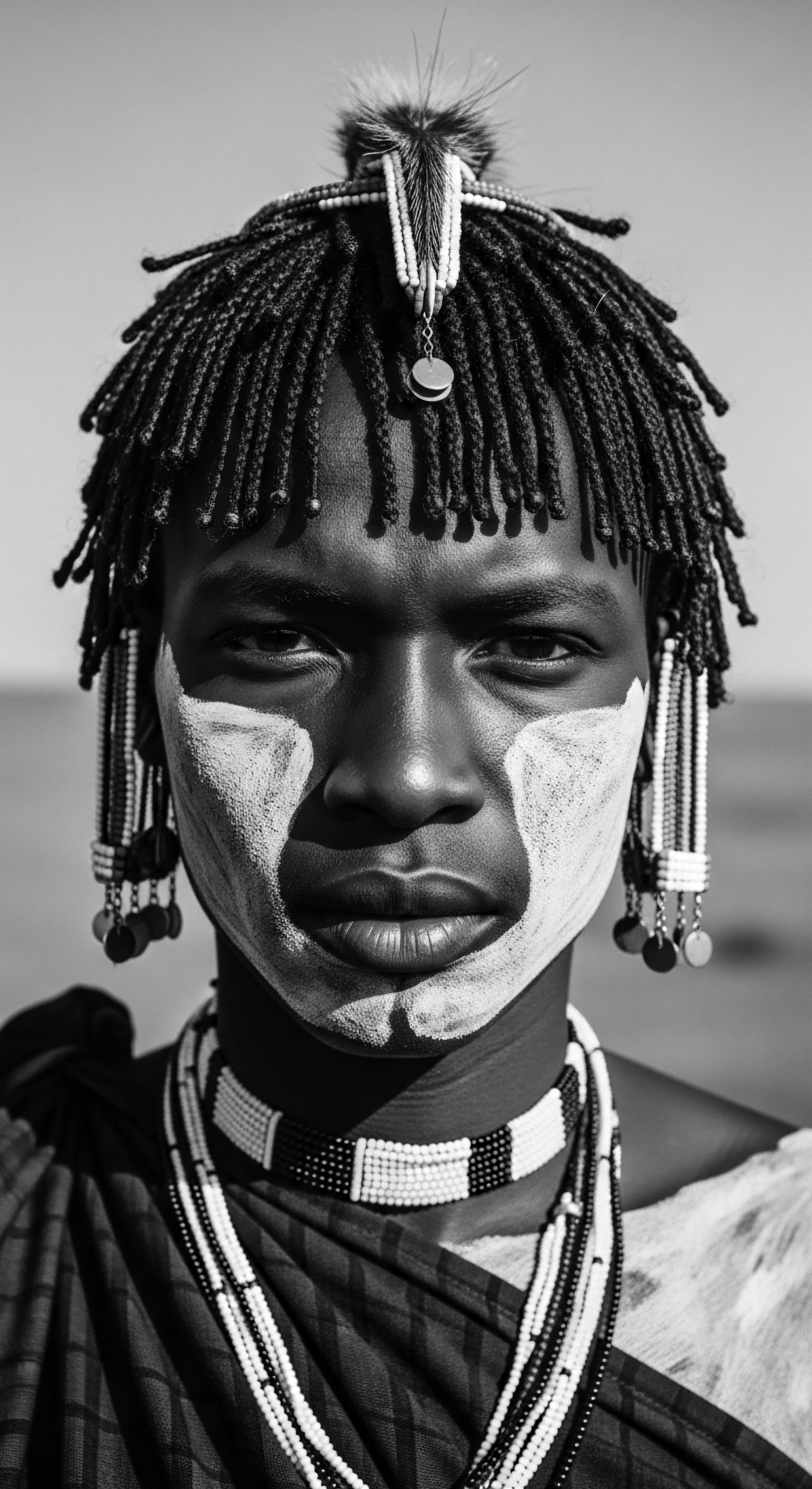
Fundamentals
The concept of Wig Significance, within the living library of Roothea, transcends the mere physical adornment; it is a profound articulation of identity, protection, and cultural memory. It represents far more than a stylistic choice, acting as a vibrant conduit to ancestral wisdom and a tangible expression of the ‘Soul of a Strand.’ This designation speaks to the deep cultural weight, historical lineage, and personal resonance that wigs carry, particularly within communities whose hair journeys have been shaped by the rich, complex heritage of textured hair. It is a declaration that the wig, in its myriad forms and purposes, holds a meaning that is both deeply personal and universally communal.
The initial delineation of Wig Significance grounds itself in the elemental biology of hair and its earliest human interactions. From the dawn of civilization, hair has served as a powerful symbol, a marker of status, spirituality, and tribal affiliation. The manipulation of hair, whether through braiding, coiling, or adornment, has always been an intrinsic part of human expression.
The genesis of wig-making, therefore, was not a casual innovation but a deliberate act of shaping one’s presentation to the world, often for reasons steeped in reverence and utility. This foundational understanding allows us to appreciate the wig not as a modern contrivance, but as an ancient echo, a practice that connects us to the very source of human ingenuity and our ancestors’ deep connection to their corporeal forms.
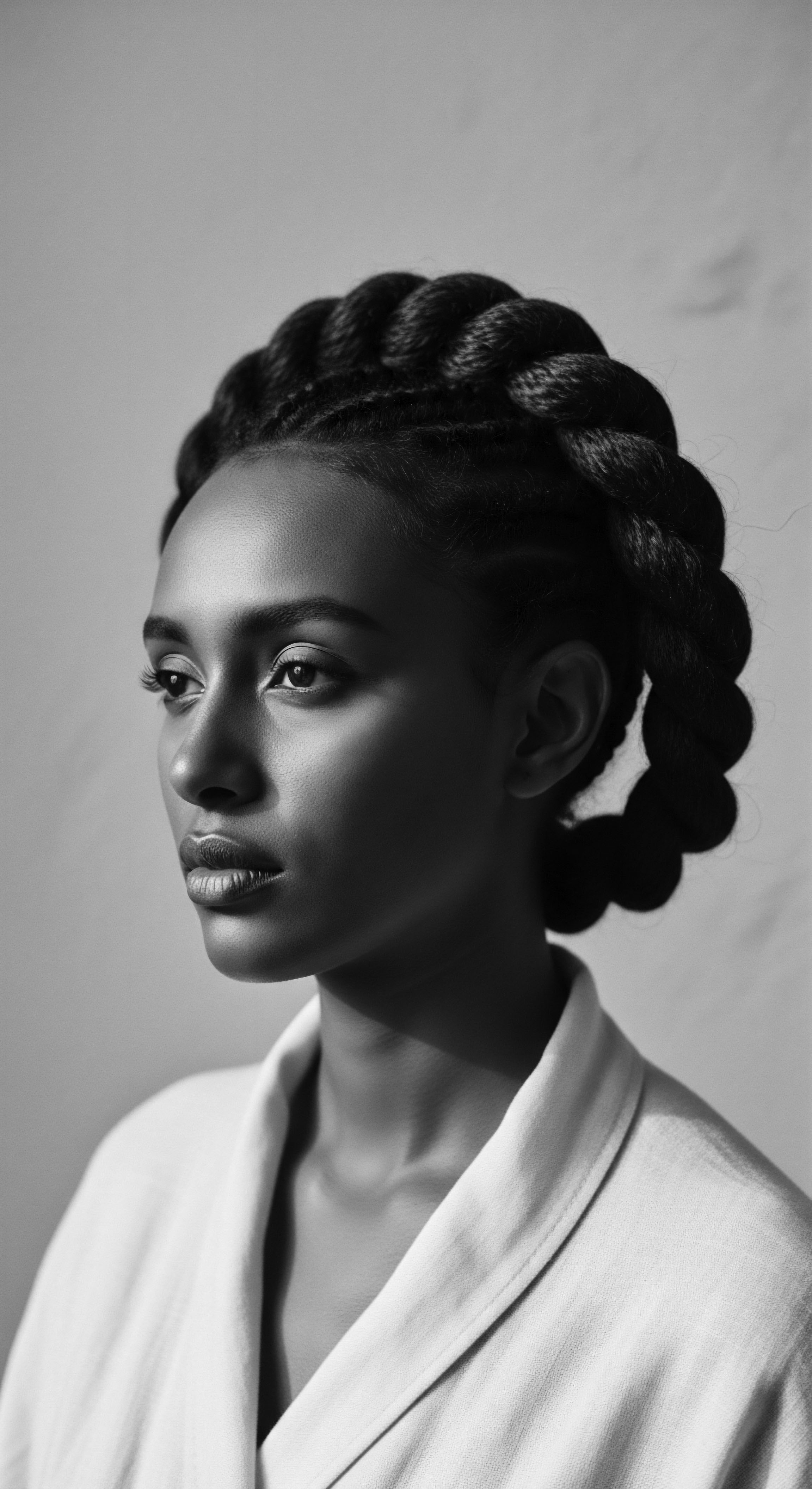
Ancient Reverberations ❉ Hair as Sacred Artistry
In ancient civilizations, particularly those on the African continent, the practice of adorning and shaping hair held immense spiritual and social weight. The wig, in this context, was often a sacred artifact, meticulously crafted to convey messages about an individual’s lineage, marital status, age, or spiritual devotion. The careful selection of materials, whether human hair, plant fibers, or even precious metals, spoke volumes without uttering a single word. These creations were not simply coverings; they were extensions of self, imbued with the wearer’s spirit and the collective history of their people.
The ancient Egyptians, for instance, were master artisans of wig construction, utilizing them for both aesthetic and hygienic purposes. Their wigs, often crafted from human hair and sometimes adorned with intricate beads or gold, were indicators of social standing and religious piety. These practices underscore an early understanding of hair as a canvas for expression and a shield against environmental elements, a testament to an ancestral comprehension of holistic well-being that recognized the intimate connection between outer appearance and inner vitality.
Wig Significance, at its core, is the profound understanding that a wig is a cultural artifact, deeply rooted in ancestral practices and imbued with layers of identity and meaning.
The deliberate construction of these early hairpieces speaks to a foundational principle of Wig Significance ❉ the intentionality behind their creation and wear. They were not accidents of fashion but deliberate choices, often guided by community traditions and a deep respect for the symbolism of hair. This early heritage provides a crucial lens through which to comprehend the enduring power and cultural resonance of wigs across generations and geographies, especially as they relate to the distinct needs and expressions of textured hair.
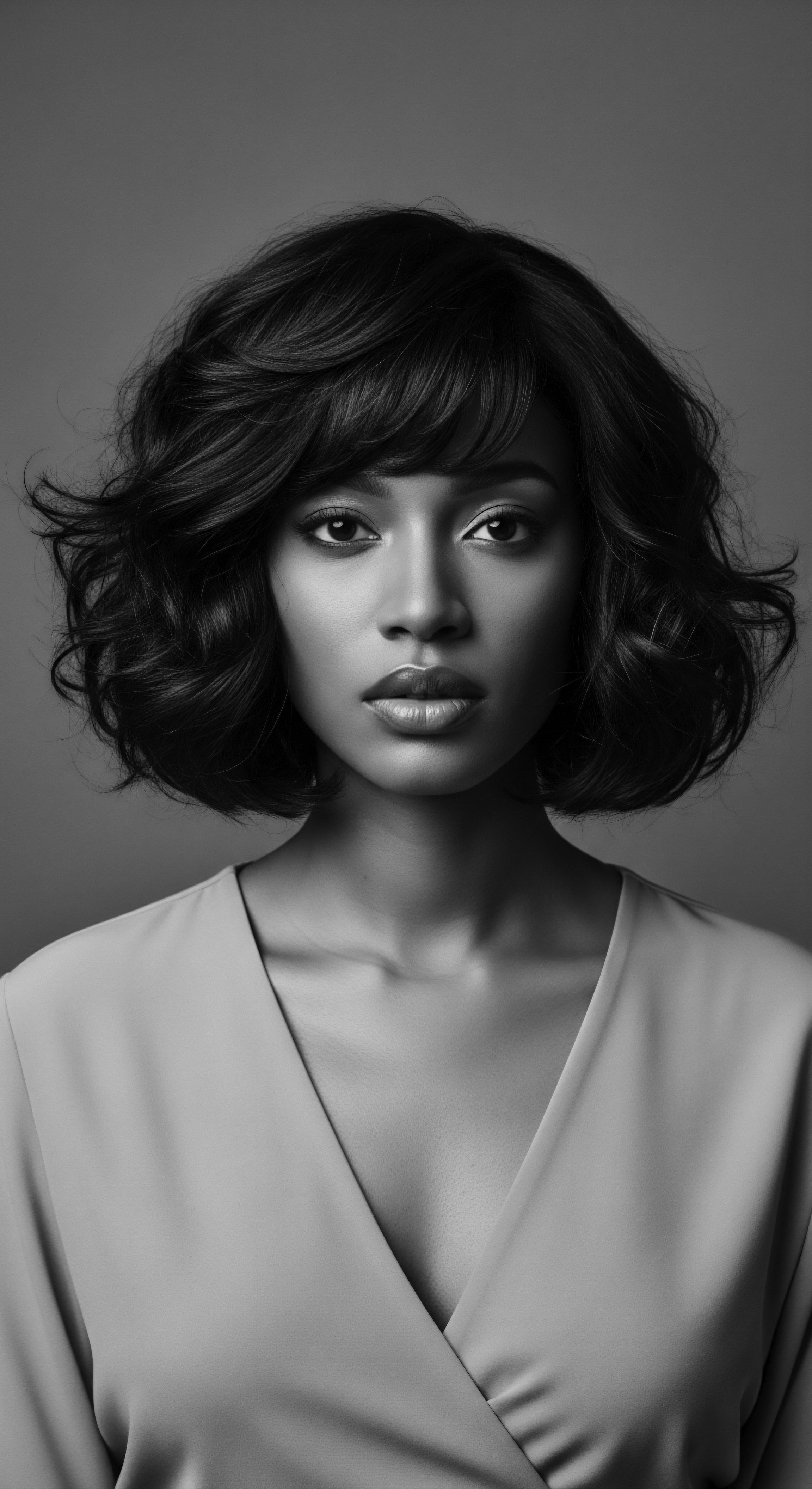
Early Materials and Methods
The methods employed by ancient artisans to construct these hairpieces were remarkably sophisticated, often utilizing natural resources with an intuitive understanding of their properties.
- Plant Fibers ❉ Various grasses, reeds, and even vegetable fibers were skillfully woven or braided to create light, breathable foundations for wigs, particularly in warmer climates.
- Human Hair ❉ Collected and meticulously cleaned, human hair was often integrated into these structures, providing a natural appearance and allowing for intricate styling.
- Animal Fibers ❉ In some regions, wool or other animal hairs were processed and incorporated, adding volume or a distinct texture to the finished piece.
These foundational practices laid the groundwork for centuries of innovation, demonstrating an innate understanding of how to manipulate fibers to achieve desired forms and functions, a wisdom passed down through oral traditions and hands-on teaching, becoming part of the collective memory of hair care.
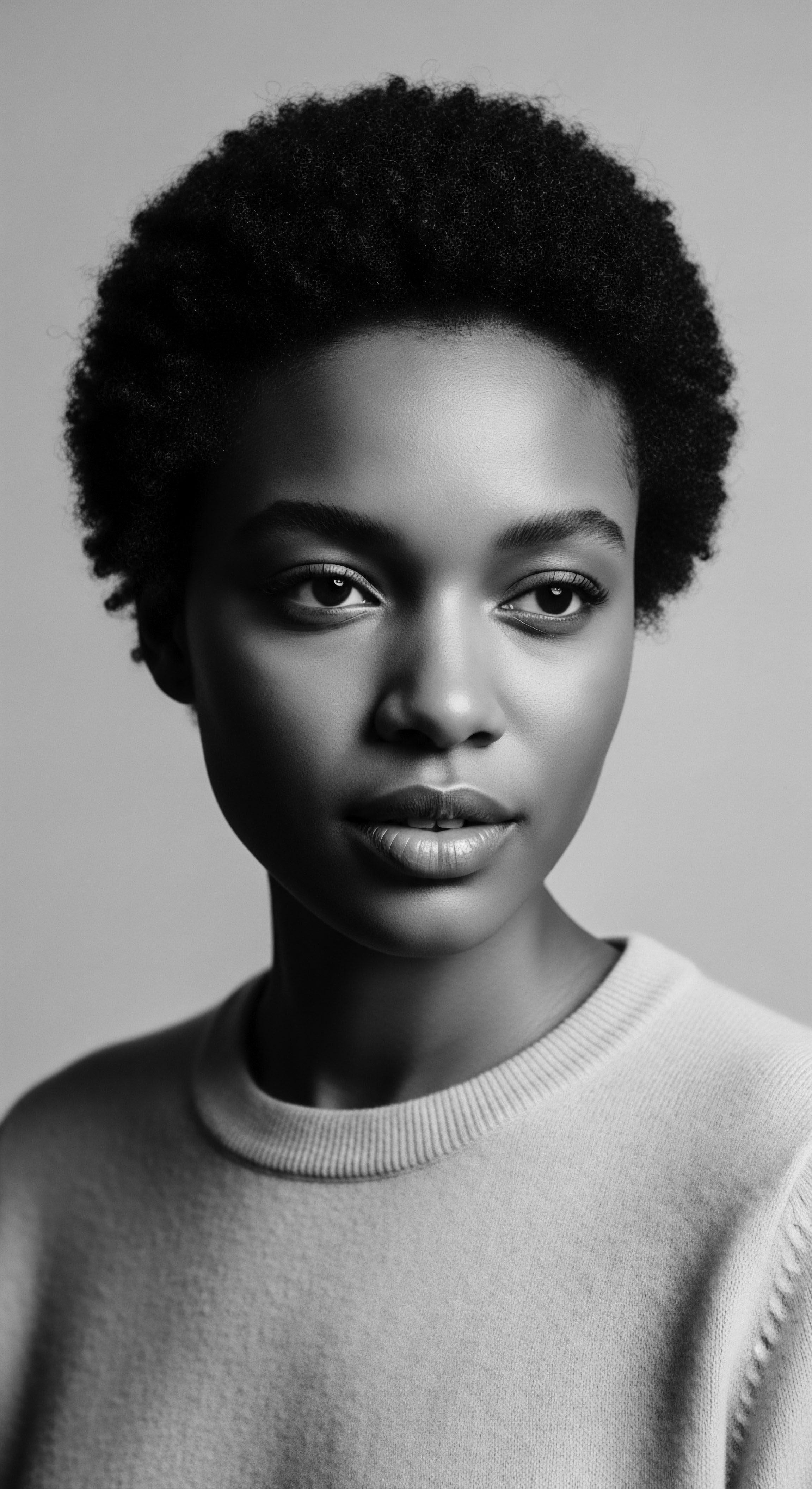
Intermediate
Expanding upon its fundamental meaning, Wig Significance at an intermediate level delves into the evolving role of these hairpieces as dynamic expressions of identity, resilience, and adaptation within textured hair heritage. This perspective moves beyond mere historical facts to explore how wigs have served as instruments of self-determination, protective shields, and canvases for cultural expression amidst shifting societal landscapes. For Black and mixed-race communities, whose hair has frequently been a site of both profound beauty and intense scrutiny, the wig’s meaning has been particularly layered, reflecting a continuous dialogue between tradition, survival, and celebration.
The journey of Wig Significance through history is not linear; it is a spiraling narrative, continuously influenced by migration, oppression, and liberation. In the context of the African diaspora, the wig often became a silent witness to immense historical shifts. It could be a means of maintaining a connection to ancestral aesthetics, a tool for conforming to dominant beauty standards for survival, or a bold statement of defiance against those very norms. This dual capacity—to conceal and to reveal—imbues the wig with a powerful symbolic weight, reflecting the complex realities of navigating identity in a world often hostile to natural textured hair.
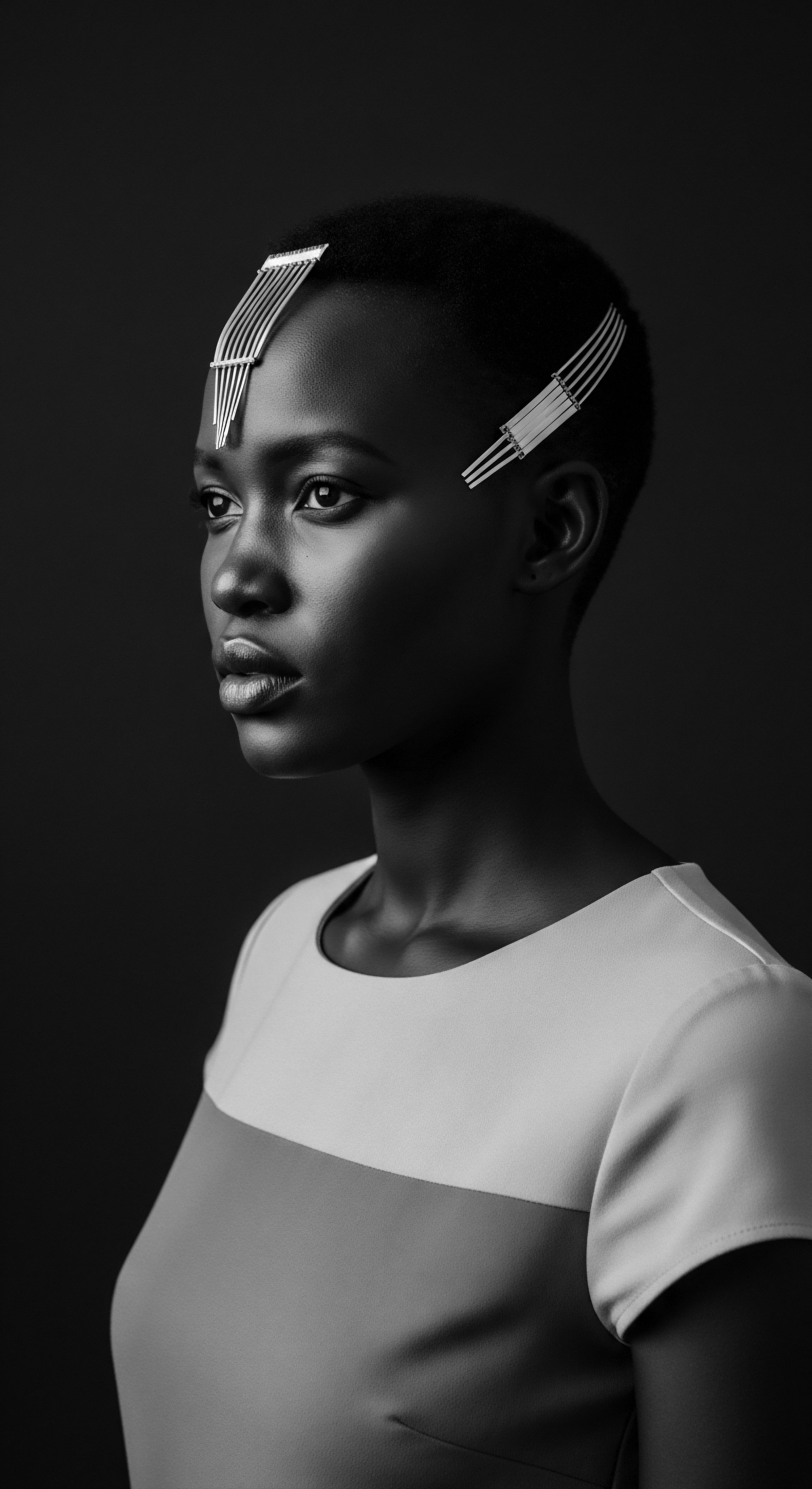
Wigs as Vessels of Cultural Continuity and Adaptation
During periods of forced displacement and enslavement, the deliberate erasure of cultural practices, including hair traditions, was a brutal reality. Yet, the ingenuity and spirit of African peoples ensured that aspects of their heritage persisted, often in adapted forms. While elaborate traditional hair styling became challenging or impossible, the concept of hair adornment and manipulation, including the use of hairpieces or head coverings, continued to hold profound meaning.
These practices became quiet acts of resistance, preserving fragments of identity and connection to a distant homeland. The wig, even in its most rudimentary form, could represent a tangible link to a heritage that sought to be suppressed.
Consider the profound impact of the Tignon Laws enacted in Spanish colonial Louisiana in 1786. These laws mandated that free women of color wear a tignon, a head covering, to distinguish them from white women and to suppress their elaborate hairstyles which were seen as too attractive (Byrd & Tharps, 2001). This seemingly oppressive decree, aimed at stripping these women of their visual power and social standing, was met with a remarkable act of cultural reclamation.
The historical application of Wig Significance reveals how oppressive mandates, like the Tignon Laws, were transformed into powerful statements of cultural resilience and defiant self-expression through hair adornment.
Instead of diminishing their presence, the women adorned their tignons with vibrant colors, luxurious fabrics, and intricate knots, turning a symbol of subjugation into a flamboyant expression of their enduring beauty, artistry, and identity. This historical instance, while focusing on headwraps, directly speaks to the broader Wig Significance ❉ the ability of hair coverings to become a site of resistance, a canvas for self-expression, and a testament to the unyielding spirit of a people determined to preserve their heritage. It highlights how an external imposition can be internally reinterpreted and repurposed, transforming an act of control into an act of profound cultural affirmation.
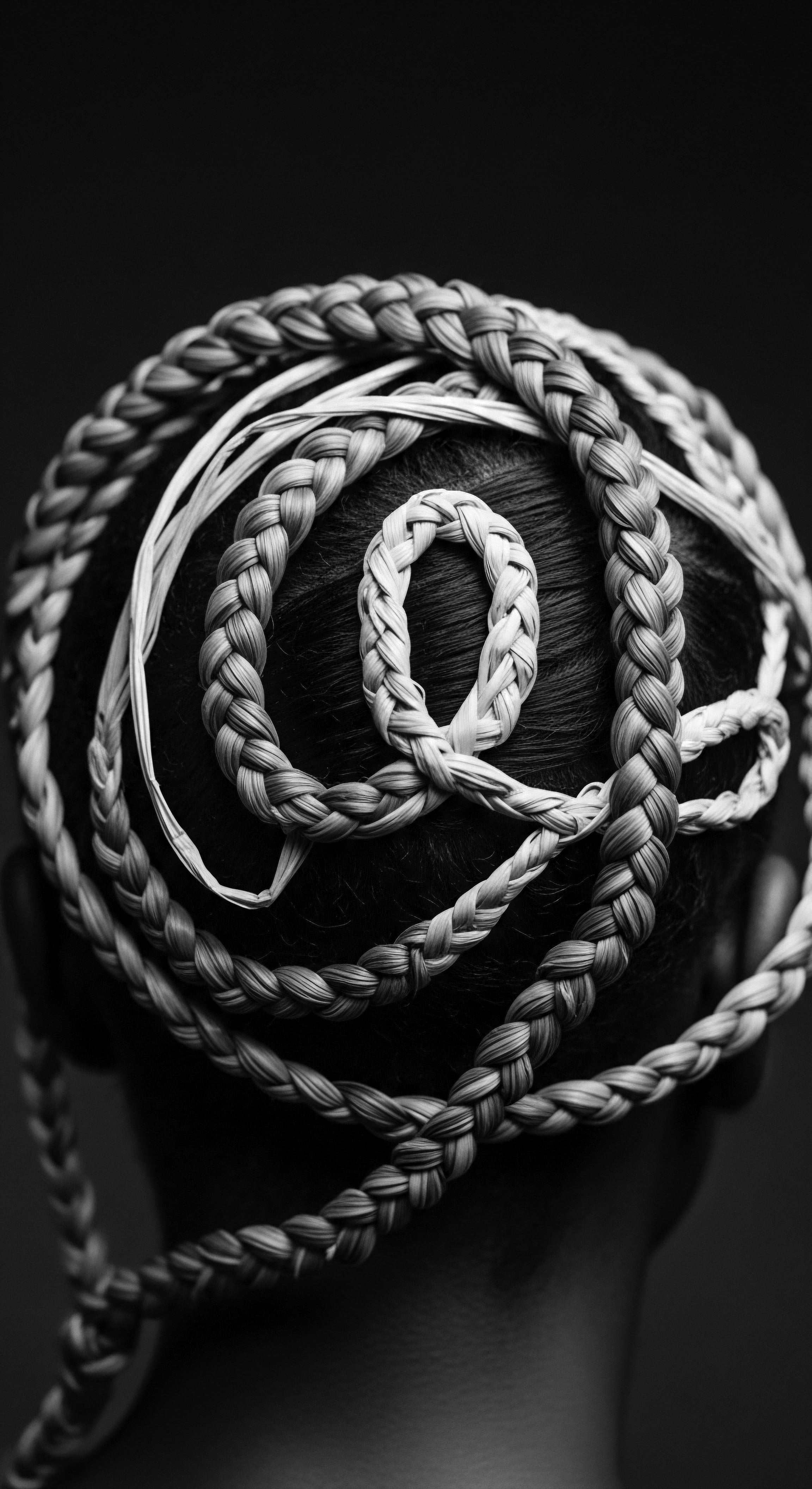
The Wig as a Protective Measure
Beyond its symbolic weight, the wig also served, and continues to serve, a practical purpose as a protective style for textured hair. The delicate nature of coily and kinky hair, prone to breakage if not handled with care, has historically necessitated methods of protection from environmental stressors and frequent manipulation. Wigs offered a respite, allowing the natural hair underneath to rest, retain moisture, and grow.
This protective function is deeply rooted in ancestral hair care practices that prioritized the health and longevity of the strand. Many traditional African hairstyles, such as braids and twists, were inherently protective, minimizing daily wear and tear. The wig, therefore, can be seen as a continuation of this wisdom, adapted to new contexts and materials.
| Historical Purpose Status symbol, spiritual connection (Ancient Africa) |
| Contemporary Relevance Fashion statement, artistic expression, cultural pride |
| Historical Purpose Protection from elements, hygiene (Ancient Egypt) |
| Contemporary Relevance Protective styling, hair health maintenance, versatility |
| Historical Purpose Covering, forced conformity (Colonial periods) |
| Contemporary Relevance Personal agency, reclaiming identity, defiant self-expression |
| Historical Purpose The enduring utility of wigs for textured hair speaks to a continuous thread of care and adaptation across millennia. |
The capacity of wigs to shield delicate strands from manipulation and environmental exposure aligns perfectly with ancestral principles of hair preservation. This functional aspect of Wig Significance underscores its practical value in maintaining hair health, a wisdom passed down through generations.
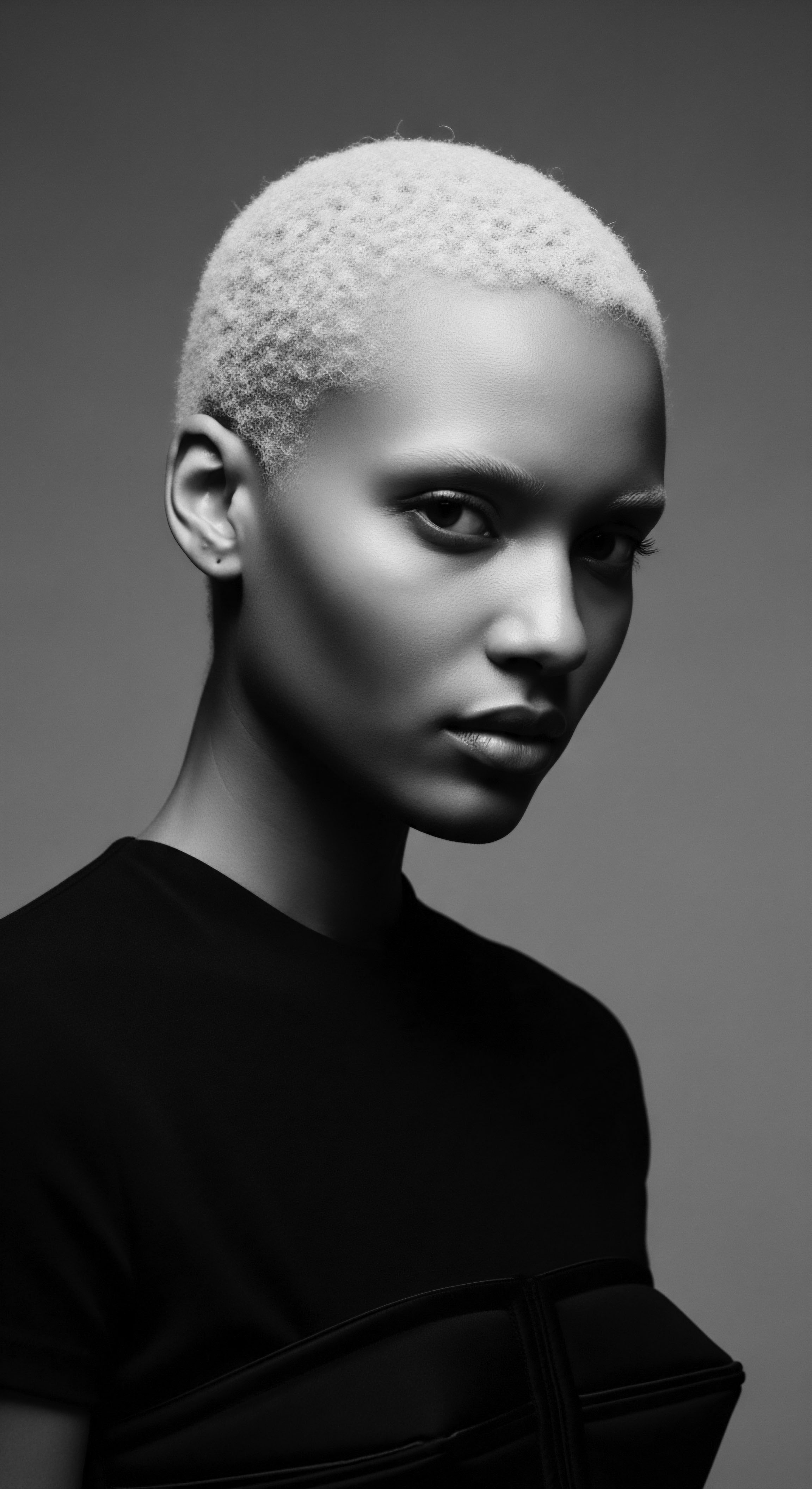
Academic
At its most academic and nuanced level, Wig Significance represents a complex socio-cultural construct, a multi-dimensional phenomenon that intersects with identity formation, psychological well-being, economic agency, and the enduring politics of appearance, particularly within the textured hair diaspora. This interpretation moves beyond descriptive historical accounts to engage with theoretical frameworks, empirical observations, and the profound, often unstated, implications of wig use as a critical site of self-fashioning and communal dialogue. The Wig Significance, from this vantage point, is not merely about wearing hair; it is about the intricate negotiation of self in relation to historical memory, systemic pressures, and the pursuit of authentic expression.
The academic elucidation of Wig Significance necessitates an exploration of its psychological underpinnings. For individuals with textured hair, particularly those from Black and mixed-race backgrounds, hair has frequently been politicized, scrutinized, and subjected to Eurocentric beauty standards. In this context, the wig can function as a psychological buffer, a means of navigating societal expectations while preserving the integrity of one’s natural hair or sense of self.
It provides a degree of anonymity or conformity that can reduce daily microaggressions and allow for greater focus on professional or personal pursuits without the constant burden of hair-related judgment. This aspect of Wig Significance speaks to the profound mental load often carried by those whose natural hair is not affirmed by dominant culture.
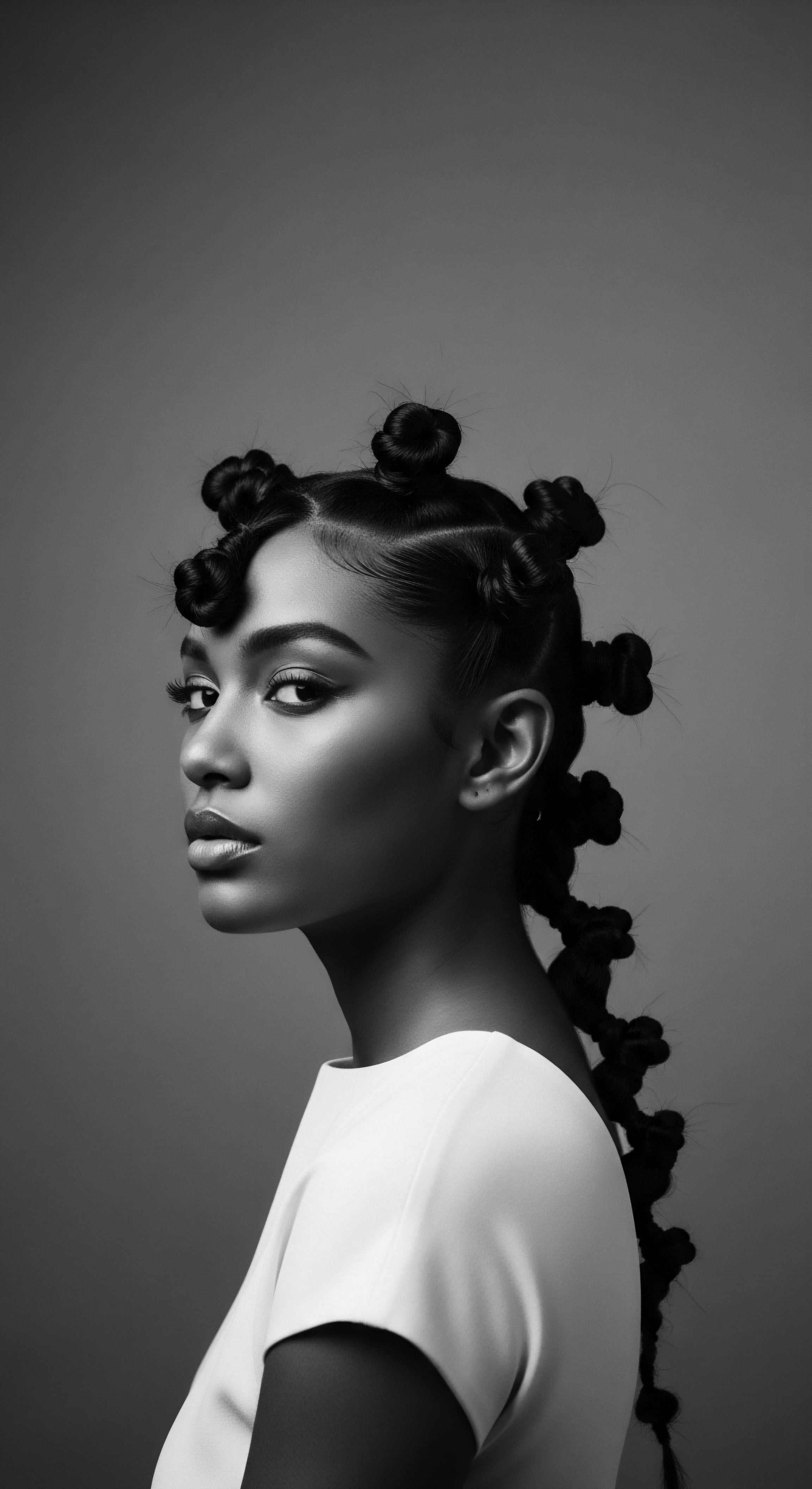
The Wig as a Psychological and Sociological Instrument
From a sociological perspective, the wig’s significance is interwoven with concepts of social mobility, assimilation, and resistance. In various historical periods, particularly post-emancipation and during the Great Migration in the United States, adopting hairstyles that mimicked European textures was often perceived as a pathway to economic opportunity and social acceptance. Wigs, therefore, became tools of strategic presentation, allowing individuals to conform to prevailing beauty norms in professional or public spaces, while perhaps maintaining their natural hair in private. This dual existence highlights the intricate dance between personal desire and societal pressure, a dance where the wig often served as a silent partner.
Conversely, the contemporary resurgence of natural hair movements has redefined Wig Significance, repositioning it as a tool for experimentation and a celebration of versatility, rather than solely a means of concealment or conformity. Academically, this shift can be analyzed through the lens of cultural reclamation and identity politics. Wigs now offer a means to explore diverse aesthetics without permanent alteration to one’s natural hair, providing creative freedom and a safe space for stylistic exploration. This evolution underscores the wig’s capacity to adapt its meaning, mirroring the ongoing journey of self-acceptance and cultural pride within the textured hair community.
The academic perspective on Wig Significance unveils its complex role as a psychological buffer and a sociological instrument, reflecting ongoing dialogues between identity, societal pressures, and cultural reclamation.
The economic dimensions of Wig Significance are also considerable. The global wig industry is a multi-billion-dollar enterprise, with a significant portion of its market driven by the needs and desires of individuals with textured hair. This economic activity supports a vast ecosystem of entrepreneurs, stylists, and manufacturers, many of whom are members of the very communities they serve.
This self-sustaining economic loop represents a powerful form of agency, where cultural needs drive commercial innovation and provide pathways for economic empowerment. The financial independence gained through the hair industry, including wig production and sales, has historically provided a vital source of livelihood and community building.
Moreover, the artistry involved in wig-making, particularly custom units designed to mimic natural textured hair, speaks to a highly specialized skill set that often draws upon generational knowledge of hair manipulation and aesthetics. This craftsmanship, passed down through families and communities, represents an intangible cultural heritage, a living art form that continuously adapts while retaining its foundational principles. The intricate ventilation techniques, the precise color matching, and the nuanced texturing required to create a realistic wig are not merely technical skills; they are expressions of deep cultural understanding and an appreciation for the diversity of hair.
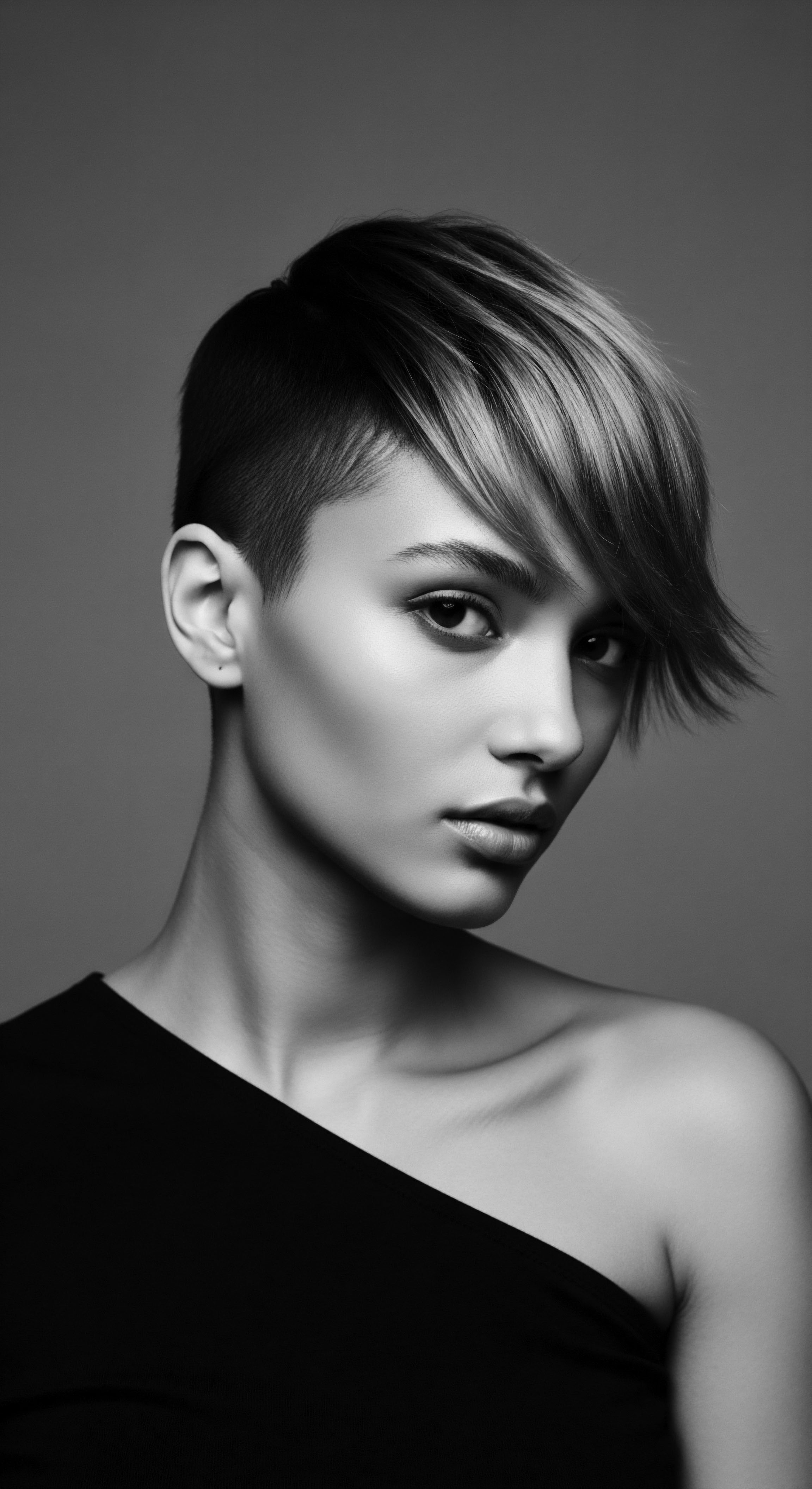
Long-Term Implications and Future Trajectories
Examining the long-term consequences of Wig Significance reveals its enduring impact on self-perception and collective identity. For many, wigs provide a sense of control over their appearance, offering the ability to transform their look for different occasions or moods without committing to permanent changes. This agency can foster a stronger sense of self-efficacy and confidence.
Furthermore, the shared experience of navigating hair politics, often involving wigs, builds communal bonds and shared narratives within textured hair communities. These narratives contribute to a collective understanding of beauty, resilience, and the power of personal choice.
The future trajectory of Wig Significance appears poised for continued evolution, driven by advancements in materials science, digital design, and a growing global appreciation for diverse beauty standards. The development of lighter, more breathable, and increasingly realistic wig constructions will only broaden their appeal and utility. Simultaneously, the ongoing dialogue around hair discrimination and the celebration of natural textured hair will likely continue to shape how wigs are perceived and utilized—not as a replacement for natural beauty, but as a complementary tool for expression and protection. The increasing acceptance of natural hair in mainstream spaces may paradoxically free wigs from their historical burden of conformity, allowing them to be celebrated purely for their artistic and versatile qualities.
A specific historical example illustrating this deep cultural meaning is the work of early 20th-century Black entrepreneurs who built empires around hair care products and services, including wigs and hairpieces, often catering to the specific needs of textured hair. Figures like Madam C.J. Walker and Annie Turnbo Malone not only provided products but also empowered thousands of Black women as sales agents, fostering economic independence and challenging prevailing beauty standards through self-defined means. While their primary focus was often on straightening products, the broader context of hair manipulation and the creation of alternative hair solutions, including hairpieces for volume or length, was central to their vision.
This demonstrates a proactive approach to defining beauty on one’s own terms, a critical aspect of Wig Significance. These enterprises were not just about commerce; they were about building dignity and opportunity in a discriminatory society.
The enduring success of these enterprises, built on understanding the specific hair care needs and aspirations of Black women, underscores the economic and social power embedded in the concept of Wig Significance. It illustrates how an item of adornment can become a catalyst for economic self-sufficiency and a symbol of collective progress.
- Economic Empowerment ❉ The wig industry has historically provided significant entrepreneurial opportunities, particularly for Black women, fostering financial independence and community wealth.
- Stylistic Versatility ❉ Wigs allow for exploration of diverse aesthetics without chemical or heat damage to natural hair, promoting hair health and creative expression.
- Identity Negotiation ❉ Wigs serve as a means to navigate societal beauty standards, offering choices between conformity and overt cultural expression, depending on personal agency.
The study of Wig Significance, therefore, extends into the very fabric of human experience, revealing how an object can embody complex layers of history, psychology, and societal dynamics. It is a testament to the adaptive nature of human culture and the persistent quest for self-expression and affirmation, especially when facing historical and ongoing challenges to one’s inherent beauty. The careful analysis of its trajectory, from ancient roots to contemporary manifestations, provides profound insights into the intricate relationship between hair, identity, and the collective human story.
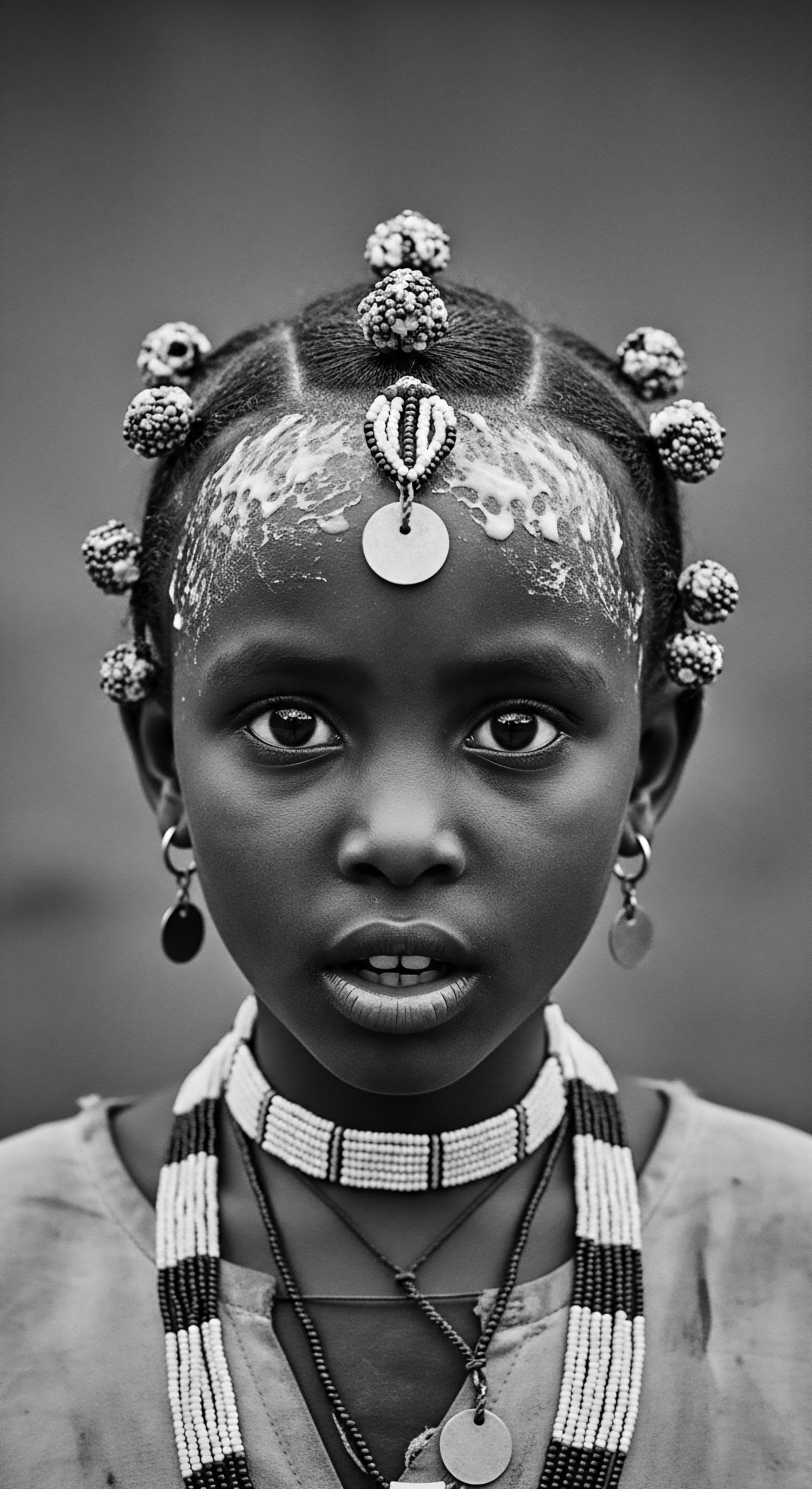
Reflection on the Heritage of Wig Significance
As we conclude our exploration of Wig Significance, the echoes from the source reverberate with clarity ❉ the wig is far more than a simple accessory. It stands as a living testament to the enduring spirit of textured hair heritage, a profound meditation on resilience, creativity, and the unwavering pursuit of self-definition. From the ceremonial headpieces of ancient African royalty, crafted with an intuitive understanding of natural fibers and sacred symbolism, to the strategic adornments of the diaspora, each strand, each carefully placed coil or wave, tells a story of survival, adaptation, and triumph. The journey of the wig, mirroring the journey of textured hair itself, speaks to a continuous thread of care, community, and courage.
The tender thread of ancestral wisdom, woven through generations, reminds us that hair has always been a sacred part of self. Wig Significance honors this truth, acknowledging the protective embrace a wig offers, allowing natural strands to rest and flourish. It celebrates the artistry of human hands, connecting us to those who, centuries ago, painstakingly fashioned hair into forms of beauty and utility. The wig, therefore, is not a departure from heritage, but rather an extension of it, a dynamic expression of the same ingenuity and deep connection to self that characterized our forebears.
In its unbound helix, the wig continues to voice identity and shape futures. It provides a canvas for individual expression, a tool for navigating the complexities of modern life, and a powerful symbol of autonomy. It reminds us that our heritage is not static, but a living, breathing force that informs our present choices and inspires our future possibilities.
Roothea’s ‘living library’ recognizes Wig Significance as a vibrant chapter in the ongoing narrative of textured hair, a narrative rich with meaning, steeped in history, and perpetually unfolding. It is a reminder that every strand holds a story, and every wig, a legacy.
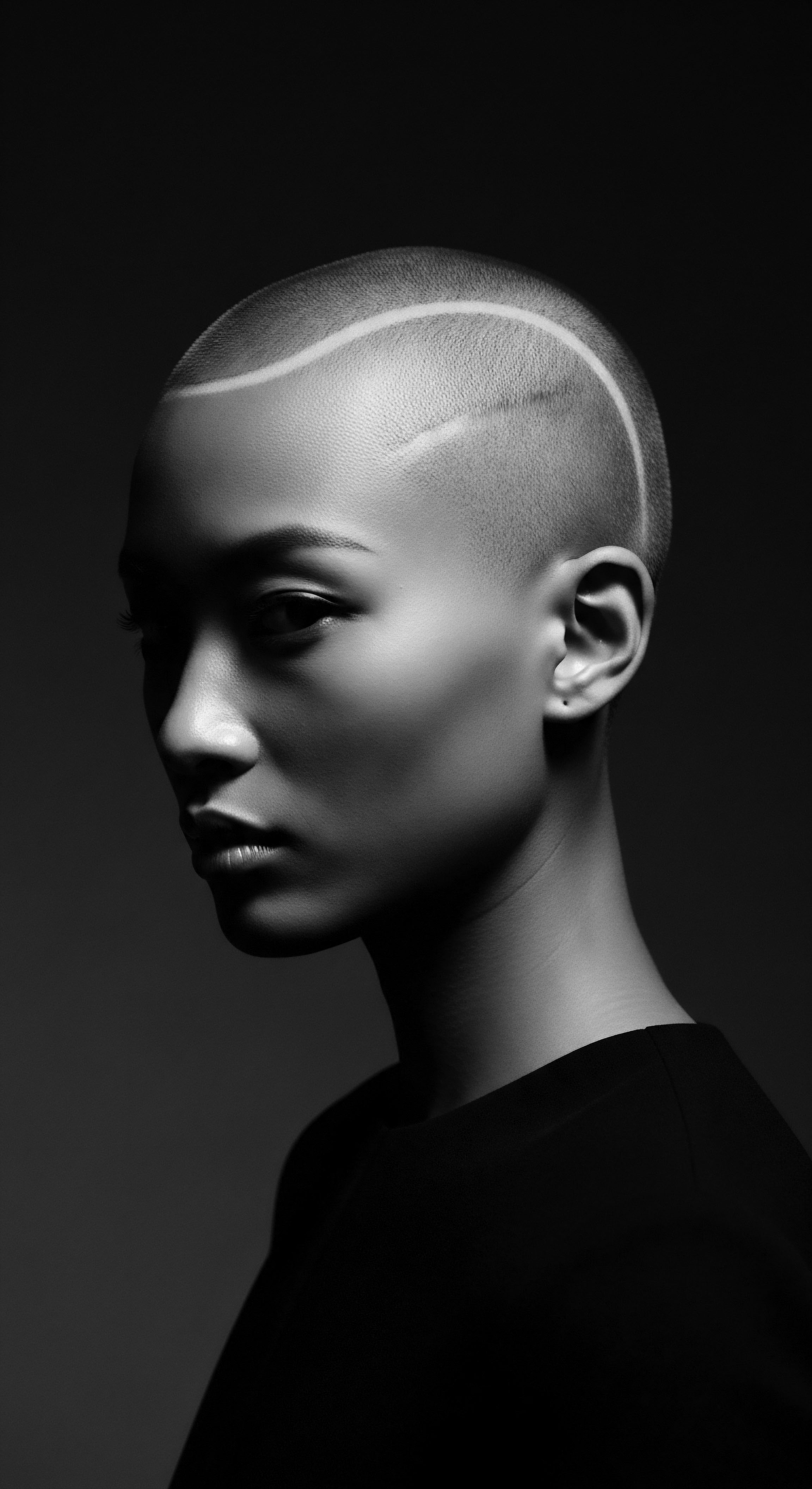
References
- Byrd, A. & Tharps, L. (2001). Hair Story ❉ Untangling the Roots of Black Hair in America. St. Martin’s Press.
- Hooks, B. (1992). Black Looks ❉ Race and Representation. South End Press.
- Mercer, K. (1994). Welcome to the Jungle ❉ New Positions in Black Cultural Studies. Routledge.
- Tarlo, E. (2016). Entanglement ❉ The Secret Lives of Hair. Oneworld Publications.
- Patton, S. (2006). Bling ❉ The Hip-Hop Jewelry Book. powerHouse Books.
- Banks, I. (2000). Hair Matters ❉ Beauty, Power, and Black Women’s Consciousness. New York University Press.
- Thompson, C. (2009). Hair ❉ A Cultural History. Berg Publishers.
- Caldwell, P. (1998). “A Hair Piece” ❉ Perspectives on the Historical and Cultural Significance of Hair in African American Women’s Lives. Journal of Black Studies, 28(3), 335-348.
